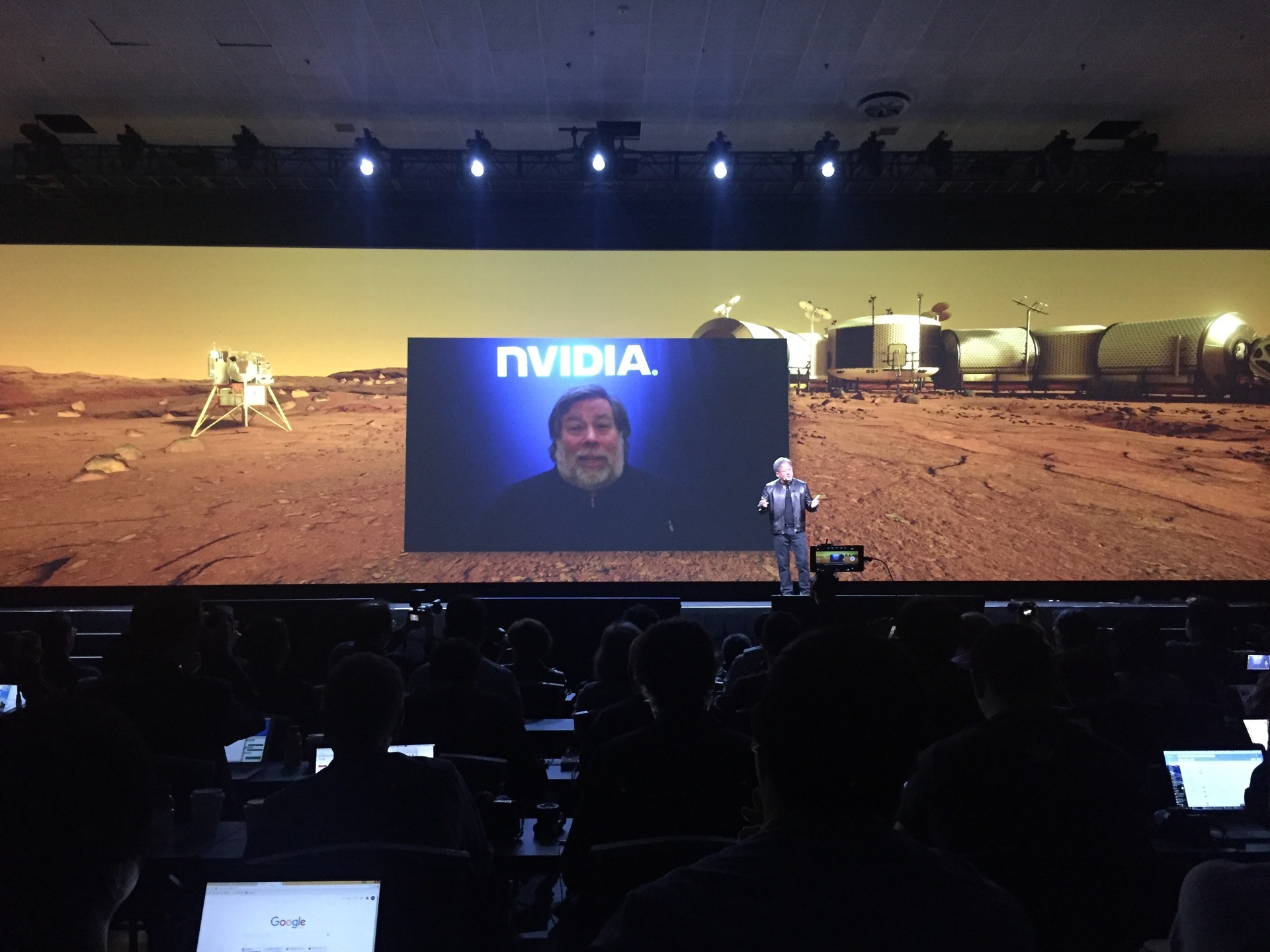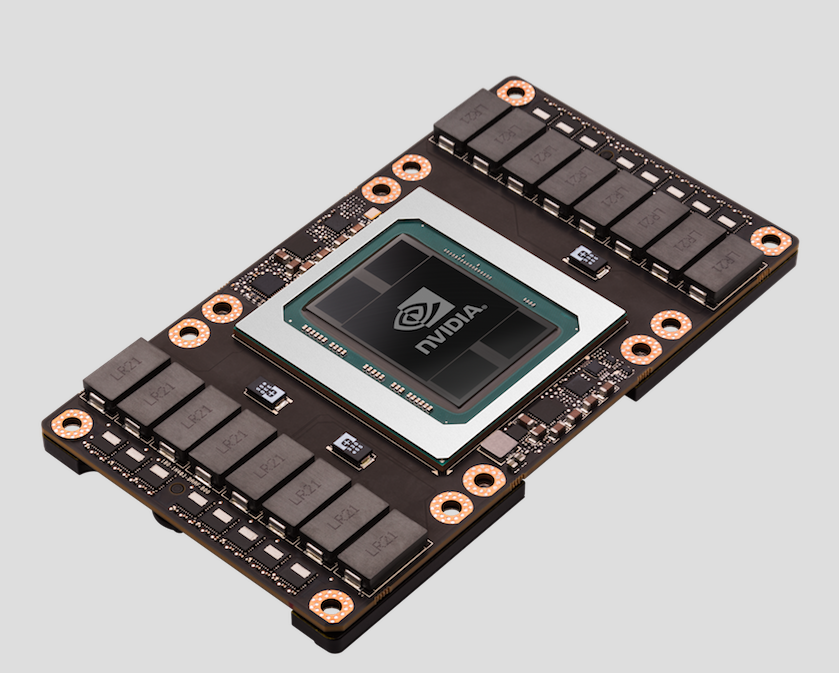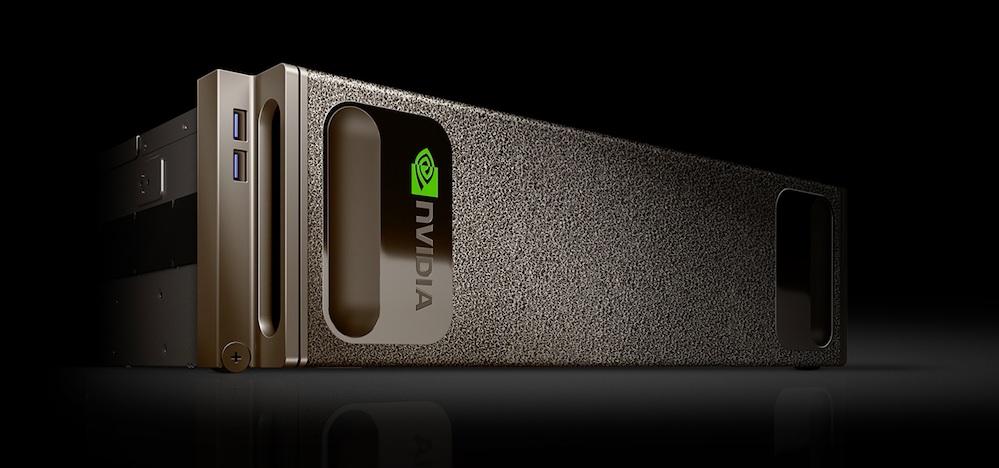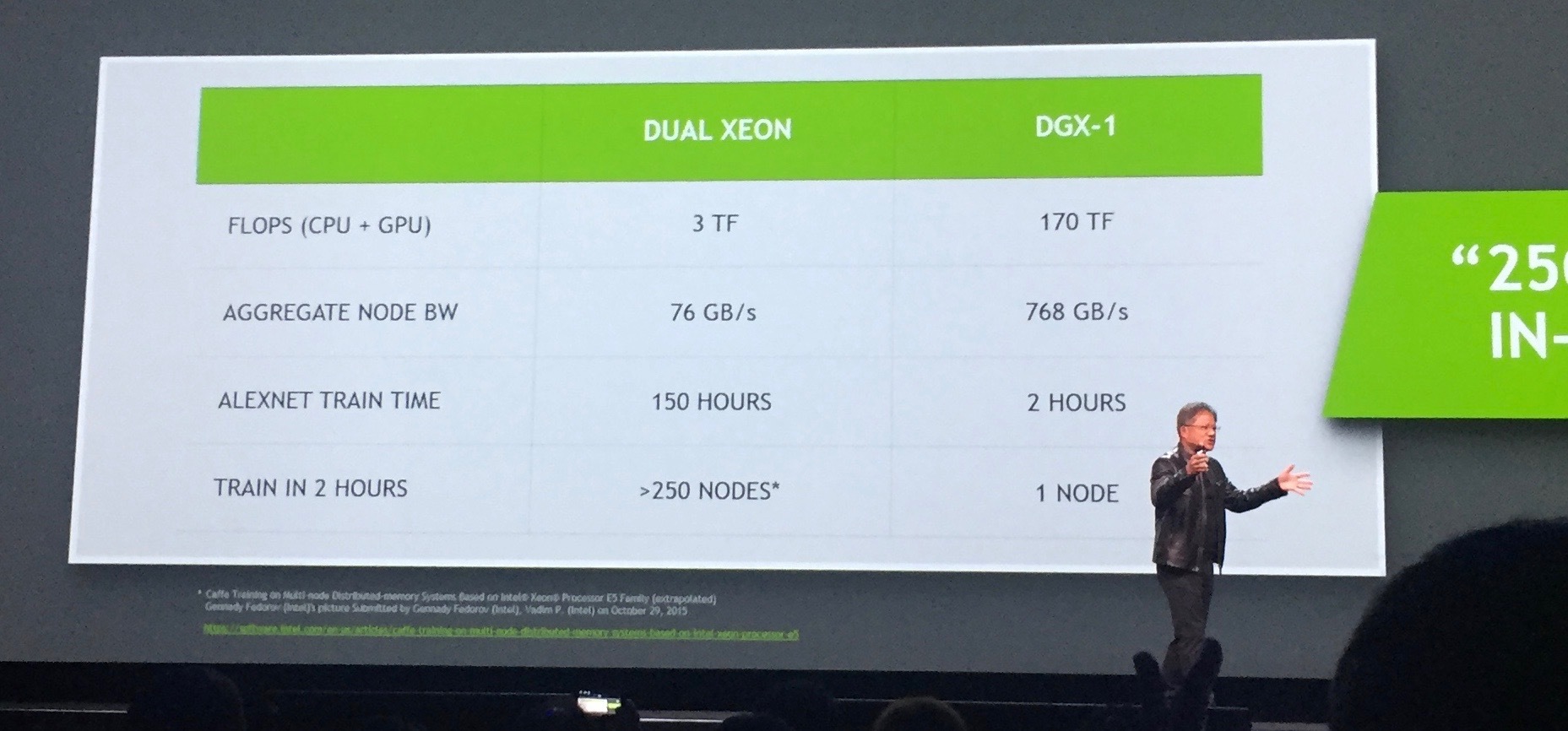NVIDIA unveils new Pascal architecture focused on artificial intelligence

Right now in Silicon Valley GPU Technology Conference is taking place . This is a major event for all those involved in parallel computing technologies, neural networks and artificial intelligence. Current 2016 is special for this conference. That is what they were preparing for and going for a long time right now acquiring finished forms. And, as it was predetermined by the development of technologies, a breakthrough occurs in all directions at once:
- neural networks built on training with reinforcements take the next height after chess and win a man in go, a game that surpasses chess in its combinatorial complexity;
- unmanned vehicles are tested on the roads and prove their worth;
- artificial intelligence platforms from IBM, Amazon, Google and Microsoft are ready for integration into the real world;
- virtual and augmented reality has already been implemented and are ready for large-scale implementation from Oculus, HTC, Sony and Samsung;
- HPC (High Performance Computing) solutions integrate almost everywhere.
Perhaps the main participant in the breakthrough is NVIDIA. It is on her gland that most of the revolutionary wonders work.
Yesterday, NVIDIA held a presentation, showed equipment and voiced ideas that will determine the course of the computer revolution for at least the next year. Surely this will be a lot of news and reviews. I happened to be present at this event, I will not retell it completely, but I will try to note those details that are especially deposited in memory.
NVIDIA has a co-founder and co-founder Jensen Huang . He led the presentation. You can judge how good a speaker is and a bright storyteller by the fact that by the end of the presentation, I began to worry sincerely that the AMD card was in my favorite iMac. Here it is the power of the word!
')
In general, I was once again convinced that computers have become different. The central processor, just recently the heart of the computer, has now faded into the background. Navigating the Internet or working with text - practically do not require system resources. Even the weakest of modern processors can easily cope with this. But for everything truly modern and interesting, even the most powerful processor is completely unsuitable. Creation of graphics in games, simulation of virtual or additional reality, image processing in real time - all this is possible only on systems with parallel computing, when the number of parallel streams goes not into units, but into thousands.
Almost at the very beginning of the speech there was a phrase that was immediately remembered: “no one needs realism any more, reality needs one”. To demonstrate this, NVIDIA applied two trump cards: an intriguing topic and unquestionable authority. They modeled with absolute certainty eight square miles of the surface of Mars with a NASA base and various techniques nearby. Try it out live video invited Steve Wozniak. It was touching and funny when Jensen thanked Steve for the first computer, for the SSD and suggested that if he wants to stay ahead, then NVIDIA is ready to arrange for him the right to be the first astronaut in flight to Mars in 2030. Steve happily agreed. Jensen really noted that NVIDIA is ready to pay for a one-way ticket only. Wozniak was not embarrassed and said that Mars is a dream in one, so in one. In short, they agreed that it was not worth waiting for 2030 and, without delay, to test Mars in NVIDIA performance right now, especially since the promise was “not realism, but reality”. Judging by the reaction, the reality of Mars Wozniak liked. He cheerfully drove in his helmet Oculus on a marsohrod and it was obvious how he wanted to try to ram the buildings of the base, apparently, to check the promised reality well, absolutely to the fullest.

Justifying the slogan “not realistic, but reality”, NVIDIA presented the main hero of the occasion new Pascal architecture. 15 billion transistors on a single chip - this is more than any other chip, created by people earlier. Stunning features can be viewed at the link .
When the amount spent for three years of development of this architecture was announced, for some reason I thought that Rosnano could have pulled it, but for some reason it did not draw, it became somehow sad.
Pascal gaming graphics cards will appear this year. It seems that their high performance will need first of all the second generation of virtual reality systems. Now for all VR systems, the resolution is still far enough from the retina. Both Oculus and HTC, in their first release when choosing a resolution, proceeded from the performance of existing video cards today. Perhaps Pascal will correct this situation.
Showed the Tesla P100 module. This is the first product based on the new architecture. P100 - an accelerator based on which you can build various computing systems. They promised that at the beginning of next year, servers from all major players will appear.

NVIDIA itself showed what deservedly can be proud of - the supercomputer DGX-1 .

The purpose of this miracle is deep learning of neural networks. The supercomputer consists of eight P100 modules and has a capacity of 170 teraflops. The figure is huge, but it’s not the astronomical magnitude that makes the bigger impression, but the comparison with the performance of the analog of the previous generation. It was possible to achieve, not stipulated by any Moore's law, a record acceleration of 12 times.
DGX-1 allows you to train neural networks, respectively, 12 times faster, where it used to take several days, now you need hours.

This miracle is worth 129,000 dollars, but there is a feeling that it is worth it. At the NVIDIA booth, where you could see the DGX-1 live (photo from the KDPV booth), I was accompanied by an engineer from JP Morgan, who knows a lot about such things, I saw how sincerely his eyes were burning.
But iron is only half the story. Deep learning combined with convolutional networks began to produce amazing results. Already, we can speak not about evolution, but about the revolution in machine learning. But yes, I started with this. However, a qualitative leap towards a strong artificial intelligence has yet to be done. What is needed for this and what change in the computational paradigm we will have, I will try to describe later.
Source: https://habr.com/ru/post/372057/
All Articles